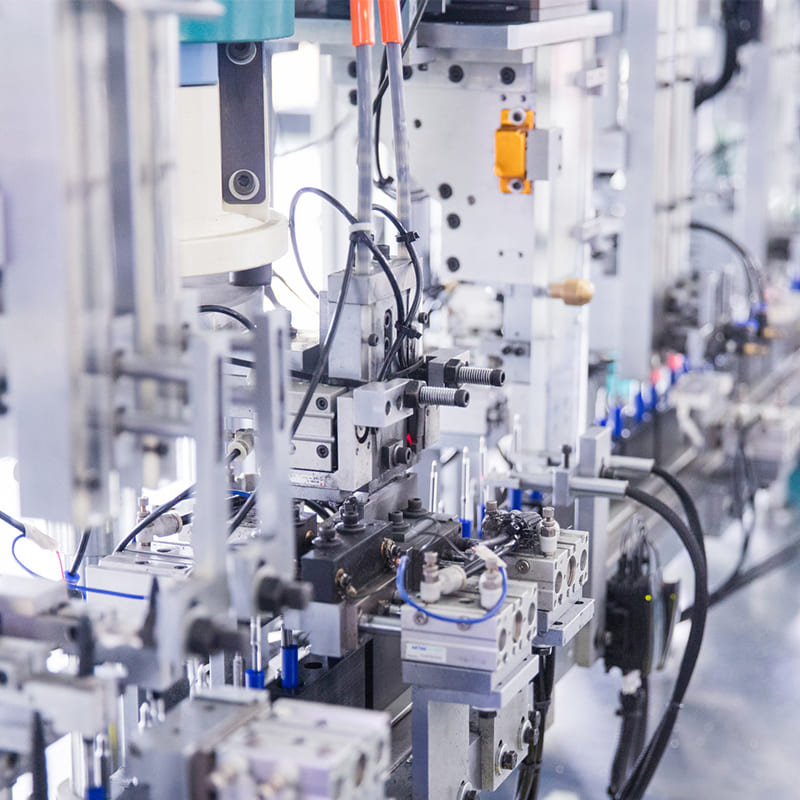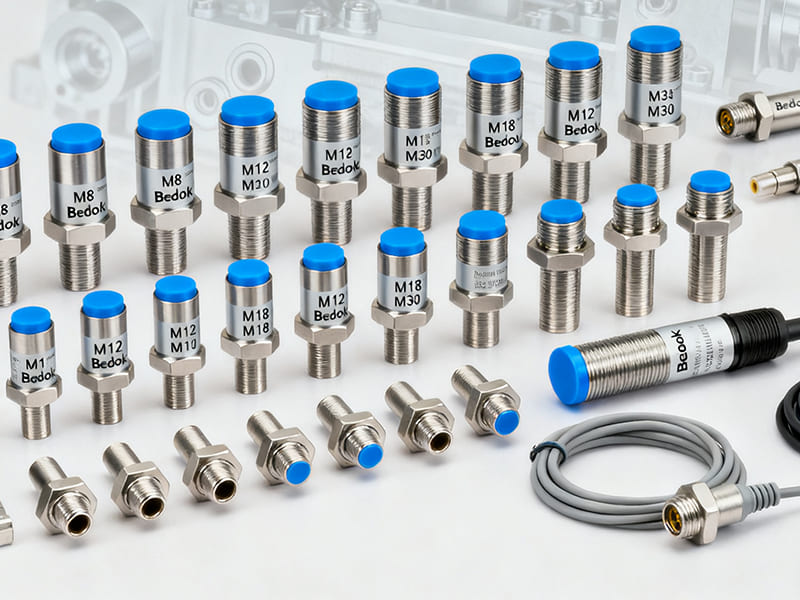Application of Inductive Proximity Sensors in Metal Sorting

Inductive proximity sensors are non-contact position sensors widely used in industrial automation. They operate based on electromagnetic induction, generating electrical signals when detecting the presence or movement of metallic objects. In metal sorting applications, inductive proximity sensors provide high precision, reliability, and fast response, making them a core technology in automated metal sorting systems.
Metal Sorting Process Using Inductive Proximity Sensors
In the metal sorting process, inductive proximity sensors are typically installed at strategic points on sorting equipment, such as conveyor belts or sorting machines. They detect the presence, position, and movement of metallic objects. The sensors’ signals are used to control sorting actions, such as activating sorting arms or stopping the conveyor belt. This allows for the automated and precise sorting of metal objects.

Working Principle of Inductive Proximity Sensors in Metal Sorting
The operation of inductive proximity sensors is based on electromagnetic induction. The sensor contains a coil that generates a magnetic field. When a metal object approaches, eddy currents are induced on the surface of the metal, causing changes in the coil’s impedance. These changes alter the sensor’s oscillation circuit, triggering an electrical signal that controls the sorting mechanism.
Advantages of Inductive Proximity Sensors in Metal Sorting
Inductive proximity sensors offer several benefits in metal sorting applications:
- High Precision: These sensors accurately detect the presence of metallic objects, enabling precise sorting operations.
- Non-contact Detection: As the sensors do not require physical contact, they avoid wear and contamination, extending the sensor’s operational life.
- Fast Response: With rapid response times, inductive proximity sensors can keep up with high-speed sorting processes, making them ideal for demanding industrial environments.
- Environmental Adaptability: Inductive sensors are designed to function effectively in harsh conditions, including high temperatures, humidity, and dust-laden environments.
- Strong Resistance to Interference: Their design ensures excellent resistance to electromagnetic interference, which is critical for maintaining system stability in metal sorting.

Real-world Applications of Inductive Proximity Sensors in Metal Sorting
Inductive proximity sensors have been widely adopted in various metal sorting applications. Below are some key examples:
- Metal Recycling and Classification
In metal recycling plants, inductive proximity sensors are used to automatically sort different types of metals. For instance, on a conveyor belt, these sensors detect and classify metallic items such as aluminum cans, copper wires, and stainless steel objects based on their electromagnetic properties. This enhances the efficiency of the recycling process and maximizes the reuse of valuable materials. - Automotive Parts Sorting
In automotive manufacturing, inductive proximity sensors are essential for detecting and sorting metal components, such as seat frames or screws, ensuring accurate assembly. On production lines, these sensors detect the correct positioning of metal parts, improving both accuracy and safety. - Metal Processing and Manufacturing
During metal cutting or stamping processes, inductive proximity sensors monitor the position and alignment of metal sheets to ensure precision. They are also used in surface treatments like electroplating, where they ensure that metal parts are correctly placed for proper processing. - Electronics Component Sorting
In the electronics industry, inductive proximity sensors assist in sorting and positioning metal components such as connectors and pins during circuit board assembly. Their high accuracy ensures that components are correctly placed, reducing the likelihood of manufacturing defects. - Metal Detection in Food Processing
Inductive proximity sensors are also used in food processing to detect metal contaminants in packaging. For example, they identify metal fragments like foil or clips in food products to ensure safety. In meat processing, they monitor the wear of metal tools, preventing metal particles from entering the food. - Metal Casting and Forging
In metal casting and forging, inductive proximity sensors monitor molten metal flow and ensure proper alignment of metal billets in forging operations. They play a crucial role in guaranteeing the quality and accuracy of metal products in these processes.

Selection Guide for Inductive Proximity Sensors in Metal Sorting
Selecting the right inductive proximity sensor for metal sorting requires careful consideration of the following factors:
- Detection Range: Choose a sensor with the appropriate detection distance based on the requirements of the sorting equipment.
- Metal Type Sensitivity: Since different metals have varying electromagnetic properties, select sensors that are specifically sensitive to the metals in question.
- Environmental Conditions: Evaluate the working environment’s temperature, humidity, and dust levels to ensure the sensor can operate effectively.
- Output Configuration: Depending on the control system, select the right output type (e.g., PNP or NPN).
- Response Time: For high-speed sorting systems, choose a sensor with a fast response time to ensure seamless operation.
Inductive proximity sensors in metal sorting significantly enhance sorting accuracy and efficiency while reducing labor costs and error rates. As industrial automation continues to advance, the use of these sensors will expand further, providing robust support for smart manufacturing and automated production processes.
Unlock Precision with Bedook Sensors!
Explore our extensive range of sensor products designed to meet your diverse needs. Whether you require customized solutions or technical expertise, our team is here to support you. Send us an inquiry for pricing and let’s discuss the best solutions for your industry!
Explore Bedook: Your Trusted Sensor Manufacturer
At Bedook, we specialize in designing, developing, and manufacturing a comprehensive range of proximity sensors and switches. Our extensive product lineup includes:
- Inductive Proximity Sensors
- Capacitive Proximity Sensors
- Photoelectric Sensors
- Ultrasonic Sensors
- Solid State Relays
- Various Accessories
With over 10,000 detailed product variations and a robust R&D team, we take pride in our ability to meet your unique requirements with tailored solutions and reliable performance.
Whether you’re seeking off-the-shelf products or customized designs, Bedook offers the expertise and production capacity to ensure your satisfaction.
Get in Touch Today!
We value your interest in our products and warmly encourage you to send us an inquiry. Let us help you find the perfect sensor solution for your application.
Thank you for considering Bedook—your trusted partner in innovation and quality manufacturing. We look forward to collaborating with you!





